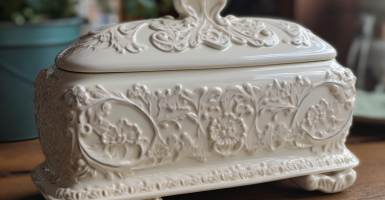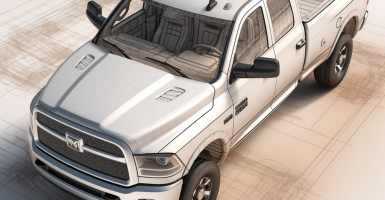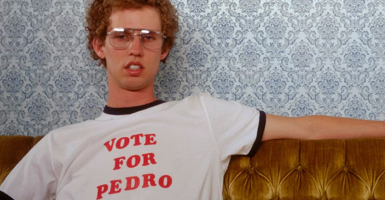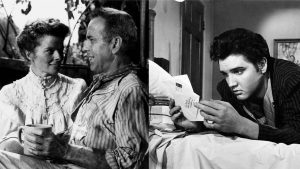20 Vintage Photos That Give Insight Into What Everyday Life Was Like In The 1930s
For many people who lived through the era, the decade of the 1930s was a period they’d rather forget. This tumultuous decade started with an economic depression, ended with the outbreak of a global war, and was a difficult time for many people around the world.
While the decade might not be remembered as a great time, it’s certainly remembered as an interesting one. Let’s delve into some iconic images that are emblematic of the 1930s.
The Dust Bowl devastated crops.

An unfortunate combination of prolonged drought, poor farming practices, and high winds led to conditions known as the Dust Bowl. With native root systems removed for farming, dry soil in the Great Plains was untethered to the ground, and high winds would kick it up into massive, dusty plumes.
Farmers who were already coping with the Great Depression faced economic ruin and crop failures, while those who inhaled the dust clouds faced respiratory ailments.
It was a golden age for Hollywood.
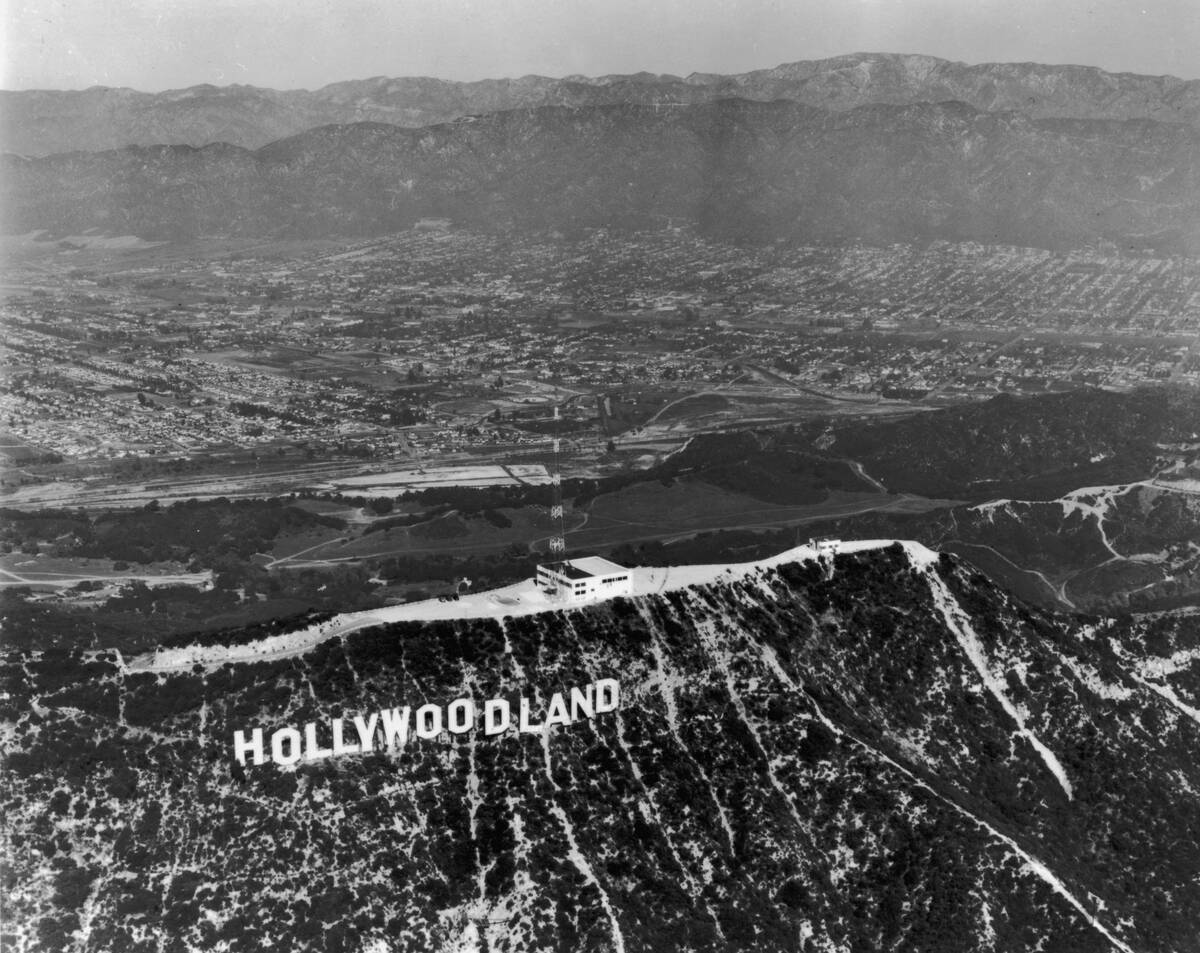
The decade was a transformative period for the film industry, as the advent of sound technology in the late 1920s meant that the blockbusters of the 1930s were all “talkies” rather than silent films.
It was during the 1930s that many of Hollywood’s iconic figures, from Clark Gable to Shirley Temple, first entered the public’s consciousness.
Movies provided an escape.

This image of the big Hollywood premiere of Captain Courageous at Cathay Circle Theater in Los Angeles shows the spectacle of old Hollywood.
Movie theaters sprung up from coast to coast, offering Americans the chance to marvel at this relatively new form of entertainment for just a few cents.
Harlem was the heart of African American life in New York.

Harlem gained prominence during the Harlem Renaissance of the 1920s, and its cultural, social, intellectual and artistic influence continued to grow throughout the 1930s.
On the political side of things, the people of Harlem pushed for civil rights and labor activism. This was also the time period that saw the emergence of a Black middle class.
The radio was a lifeline.
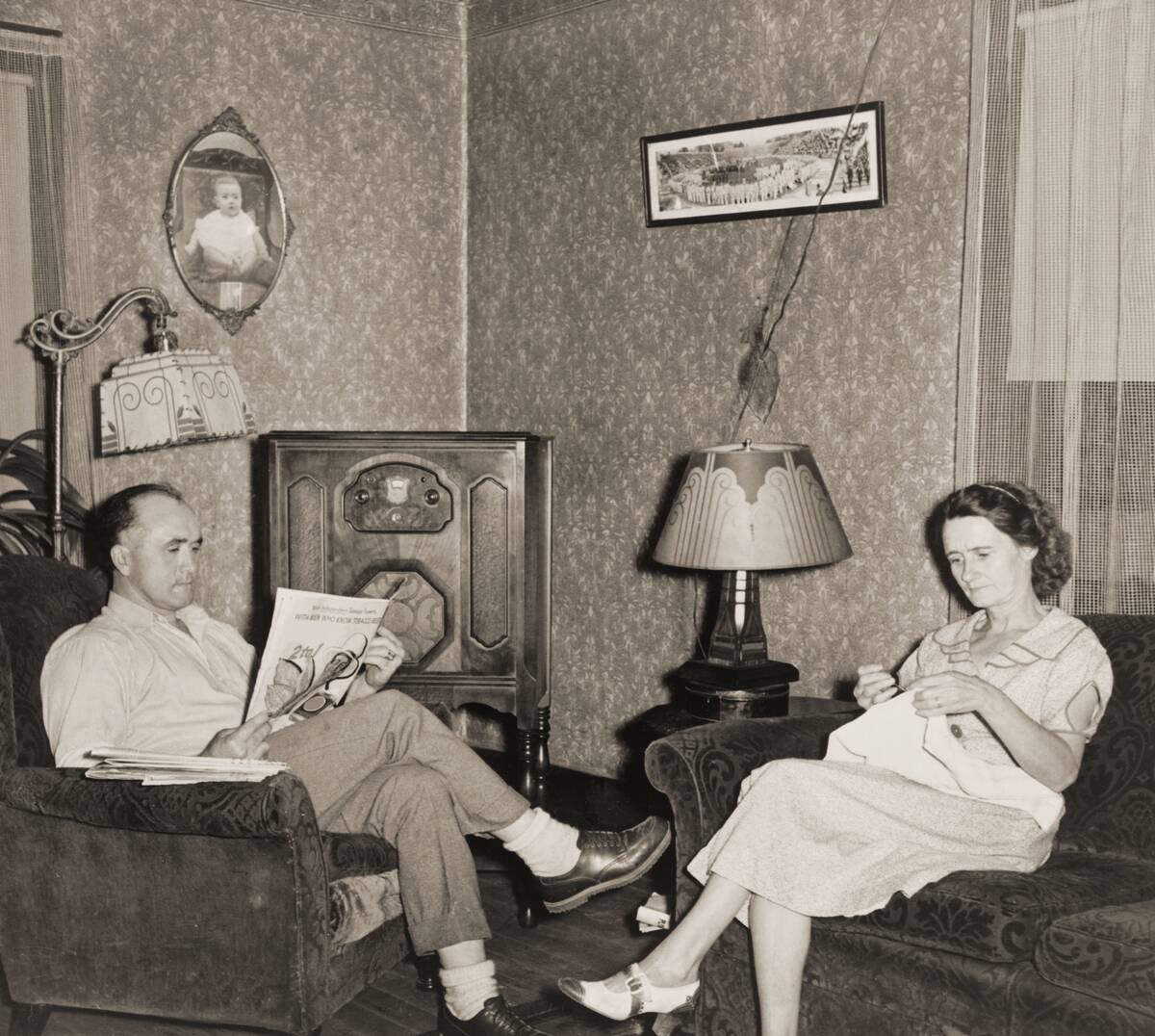
This cozy domestic scene shows a couple in West Virginia as they relax and listen to the radio. In a time when TV was a novelty, radios were the prime way to say up-to-the-minute on current events.
By the middle of the 1930s, it’s estimated that over two-thirds of American households owned a radio, which provided entertainment ranging from news broadcasts to radio dramas.
The Great Depression was a tough time.
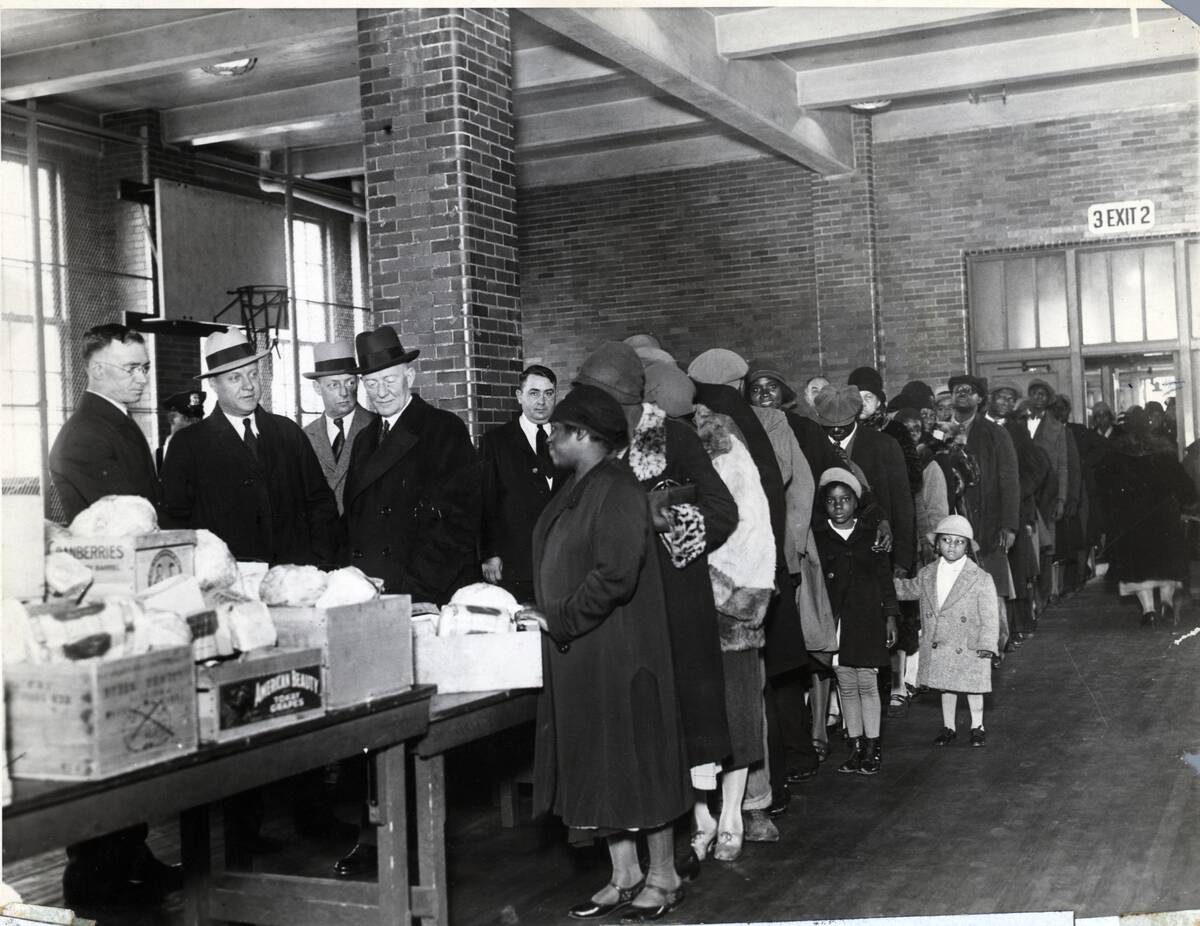
This photo shows a lineup of unemployed people lining up to receive food donations from members of the New York Police Department.
Soup kitchens, bread lines, and hobo culture were all a major part of the Great Depression, as widespread unemployment left many Americans unable to afford the basic necessities.
Jazz clubs were experiencing a moment.
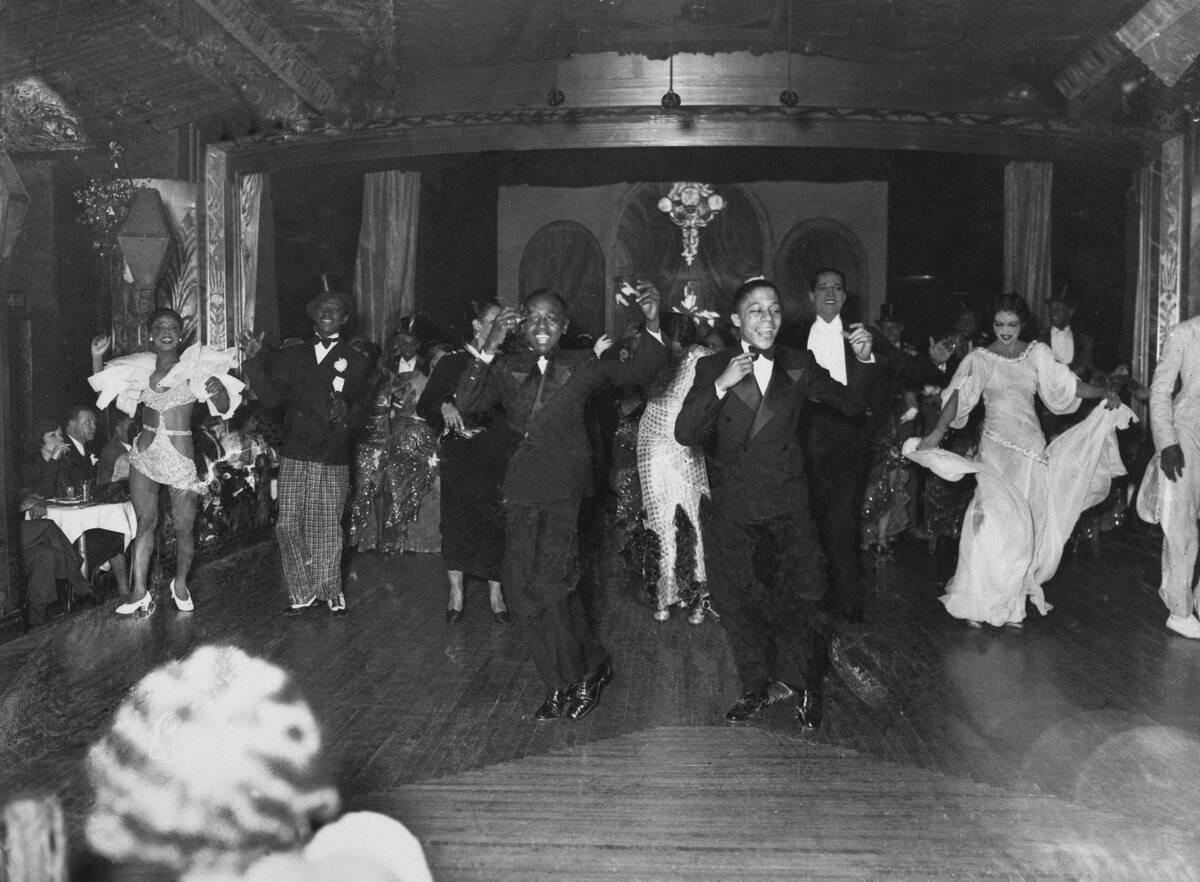
A confluence of factors — the repeal of Prohibition in 1933, the emergence of the fast-paced, spirited jazz genre, and the desire for social hubs — helped to create the phenomenon of the jazz club.
This image of Harlem’s iconic Cotton Club shows a crowd dancing to the music. Cotton Club performers included the likes of Billie Holiday, Ella Fitzgerald, and Louis Armstrong.
Many Americans became migrants.

Whether it was Oklahomans fleeing the Dust Bowl for greener pastures to the west, or African Americans in the South undertaking the Great Migration to cities further north, the 1930s were a migratory time for many Americans.
This image of an employment office in Tule Lake, California, shows a group of people eager to find work.
It wasn’t all doom and gloom.

This photo from Christmas of 1938 shows merrymakers in Paris as they toast the occasion. Paris in the 1930s was marked by a vibrant artistic and social scene against a backdrop of political turbulence.
Of course, this moment of relative calm wouldn’t last. Less than a year after this photo was taken, war would be declared in Europe.
The Garden was the mecca of basketball.
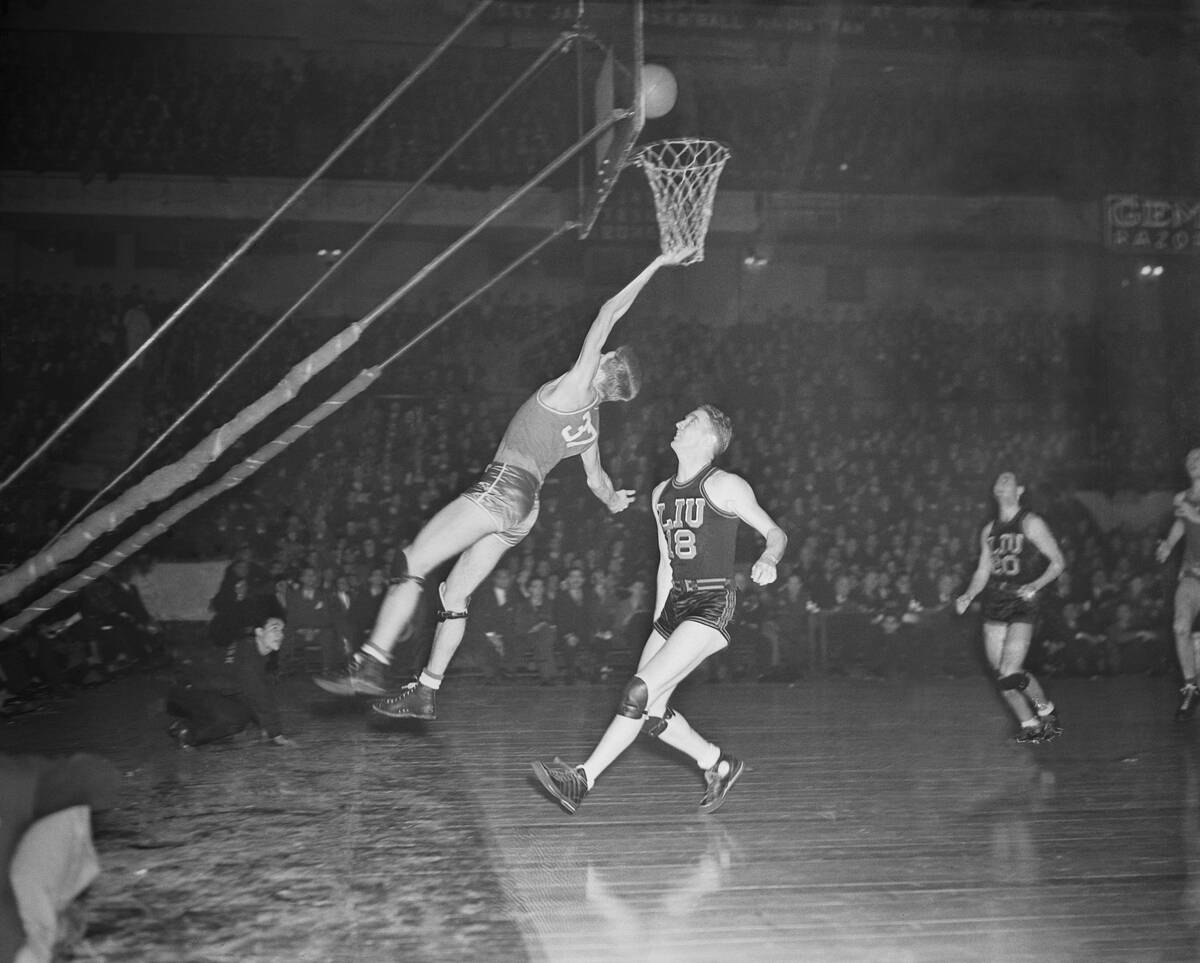
Basketball was a relatively niche sport in the 1930s, and it wasn’t until the late 1940s that the NBA’s predecessor league would start to take shape. Still, this 1930s photo of a college basketball game at Madison Square Garden shows that the sport was still plenty popular.
In fact, this image is a reminder of a legacy that’s even more long-lived than the NBA and pro basketball in general: The association between high-profile college basketball games and Madison Square Garden.
Europe was the epicenter of fashion.

America was hit hard by the Great Depression, and clothing styles tended to reflect this: Even if not everyone was wearing literal flour sacks, it was still important to be economical with materials.
In Europe, though, fashion houses like Chanel, Schiaparelli, and Vionnet established women’s styles that would be popular for years to come. Coco Chanel herself can be seen at the center of this image.
London’s famous fog was really just smog.
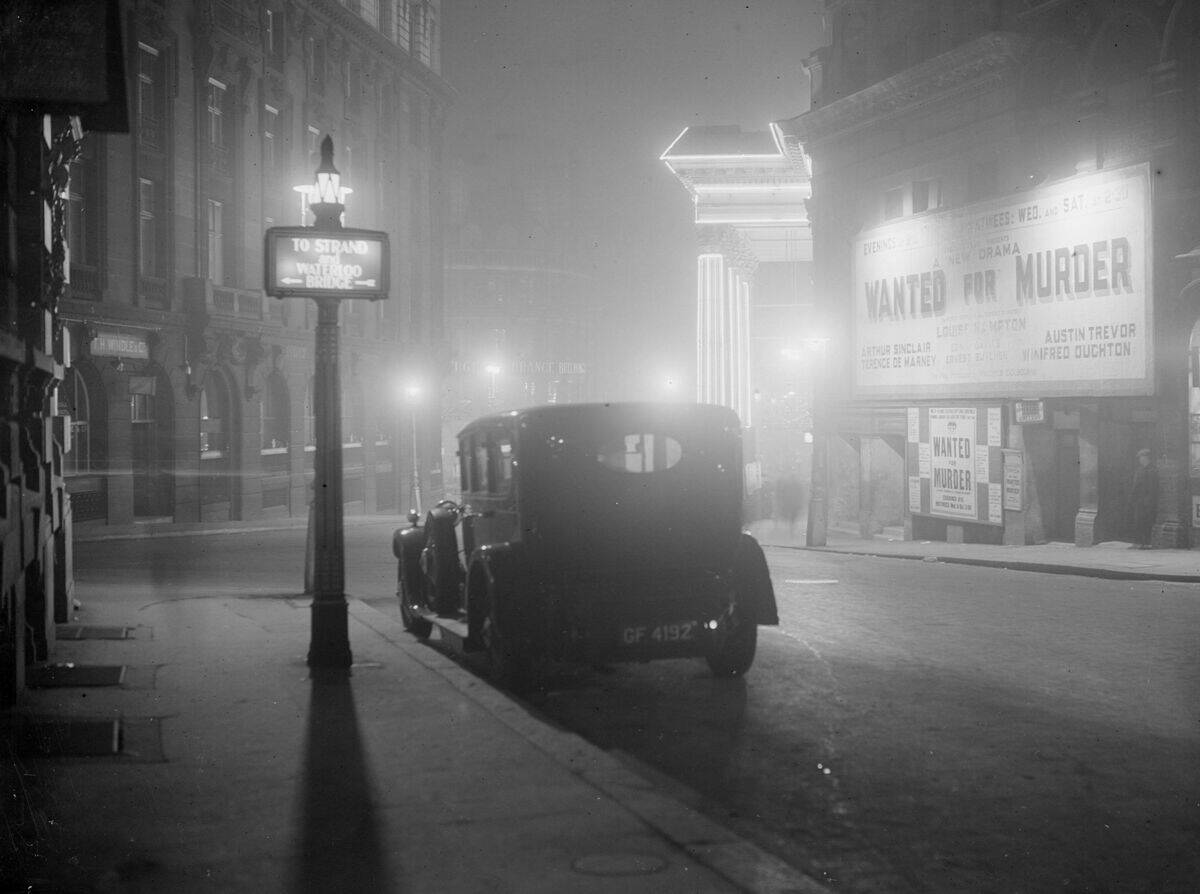
This moody photo of a 1936 night scene in London shows the city’s famous smog on full display. During the colder months, when coal consumption peaked, nights like this — known as “pea soupers” — were common.
It wasn’t until the devastating Great Smog of 1952, more than 15 years after this photo was taken, that regulatory actions started to curb this pollution issue.
Portable radios existed.
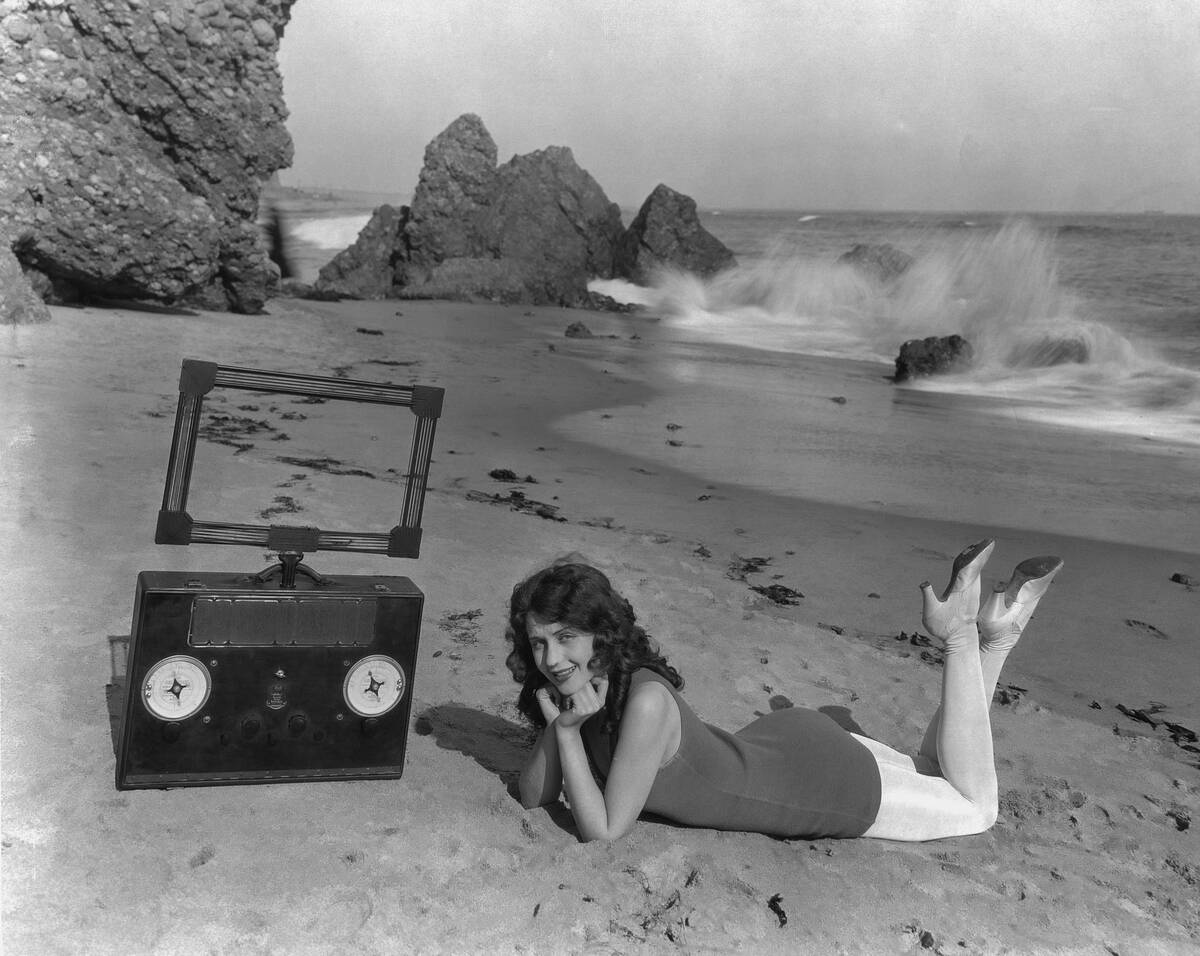
Radio entertainment was a big part of 1930s pop culture, and radio broadcasts were often amplified outdoors, in large public spaces.
This photo from the decade shows a young woman lounging on a California beach next to what’s described as a “portable radio.” It’s a far cry from a Walkman or an iPod, but it did still technically allow her to listen to the radio on the go.
Jobs were in short supply.
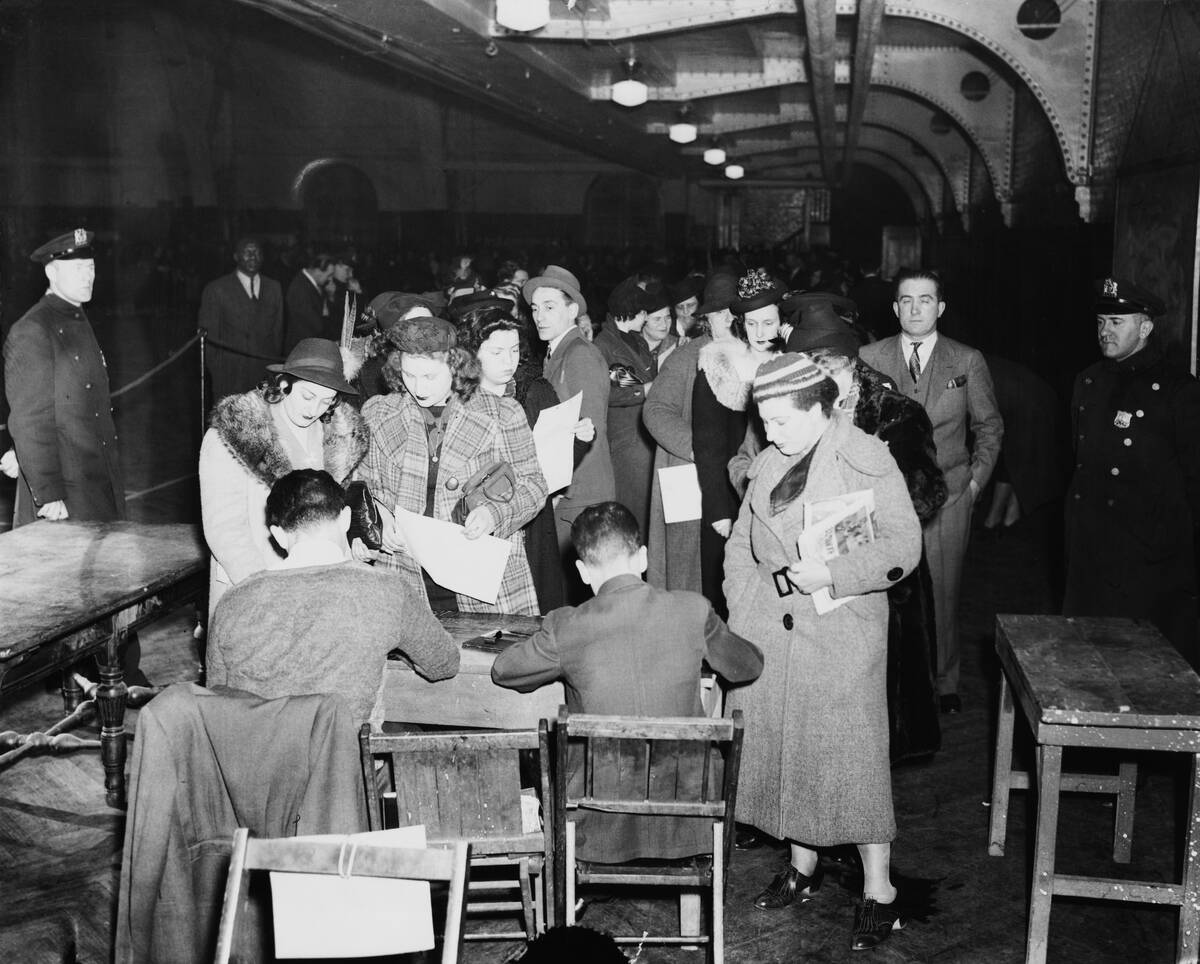
World War II famously pushed many women into the workforce as men fought overseas, but this wasn’t the first time that American women found themselves seeking jobs.
This image from 1939 — before World War II started — shows a group of women applying for jobs at the New York Health Department. Over 3,000 women applied for just twelve positions.
The wealthy were shielded from the Great Depression.

While it’s true that the Great Depression left many people — even those who’d been wealthy — in ruin, there were still those who were rich enough to weather the storm.
This photo of a party at Southampton, Long Island, in the early 1930s looks like something out of The Great Gatsby.
Racial inequality was rampant.
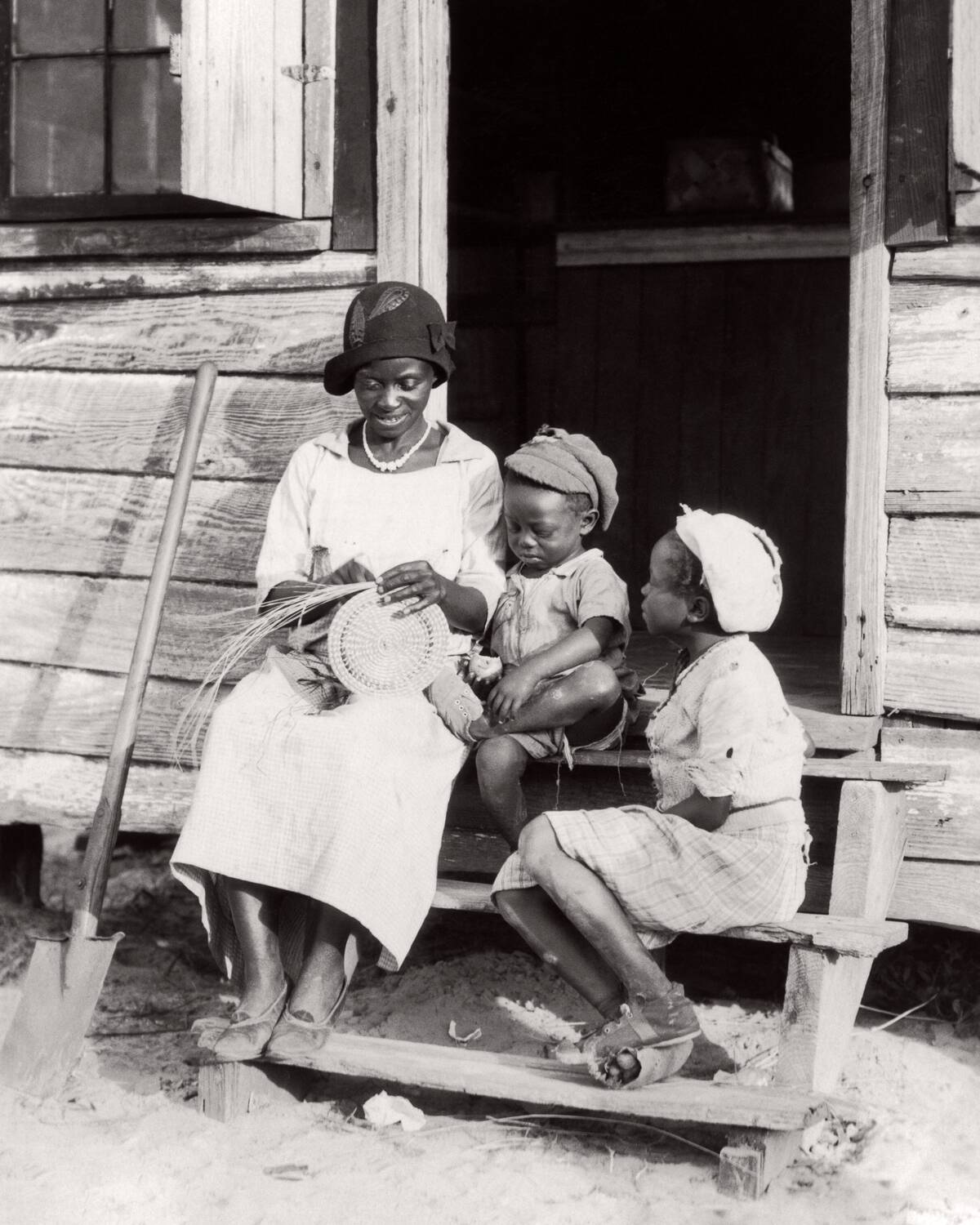
In the American South, African Americans found themselves facing deep racial inequality, economic hardship, and systemic discrimination.
Even though slavery had been outlawed for more than half a century at this point, the old scars continued to persist. It was these difficult conditions that prompted many to move to urban centers in the north, a process known as the Great Migration.
Streets were busy places.
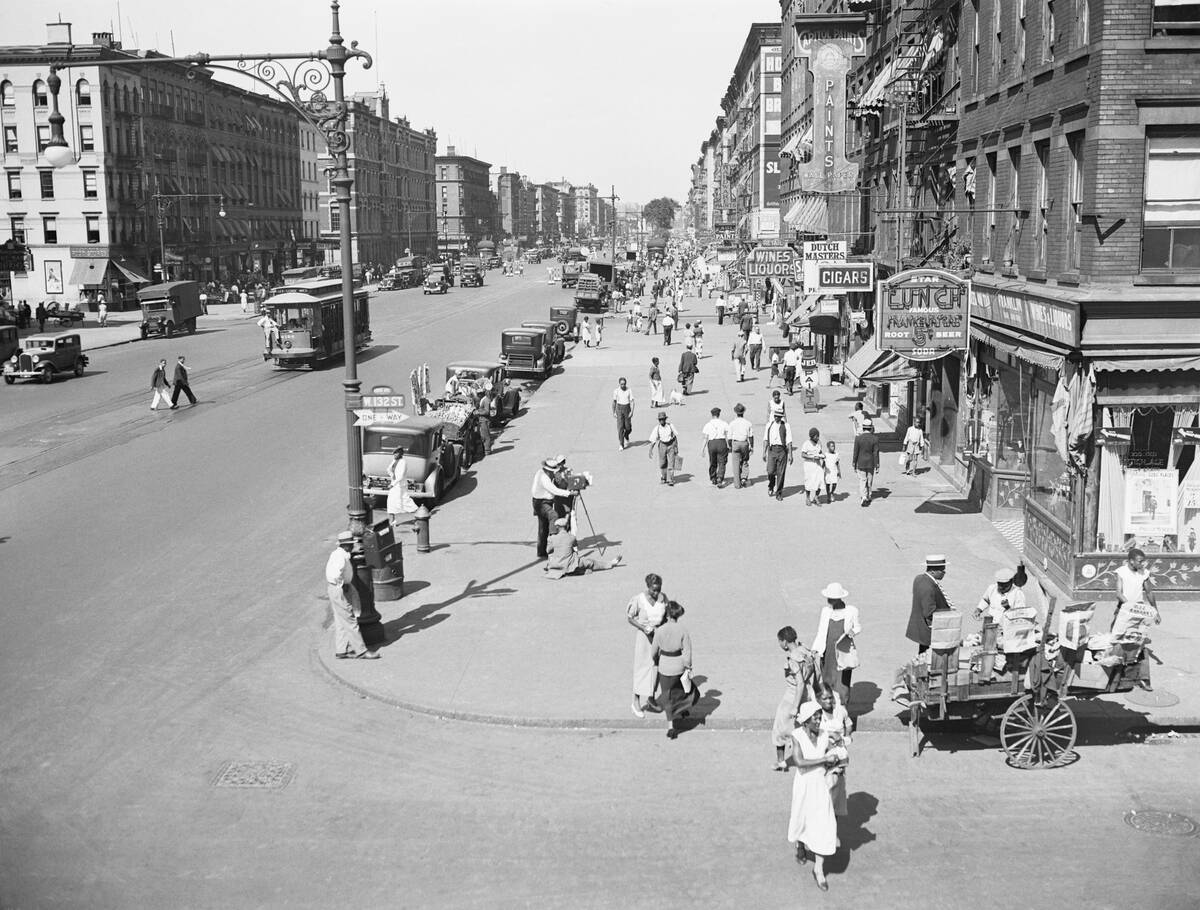
It’s safe to say that the streets of any big city are generally a lively place, but this was especially true in an era where homes didn’t feature air conditioning or diverse forms of entertainment.
This street scene shows Lenox Avenue in Harlem during a busy day in the 1930s. Lenox Avenue remains a busy hub to the current day.
Politicians increasingly turned to the radio.
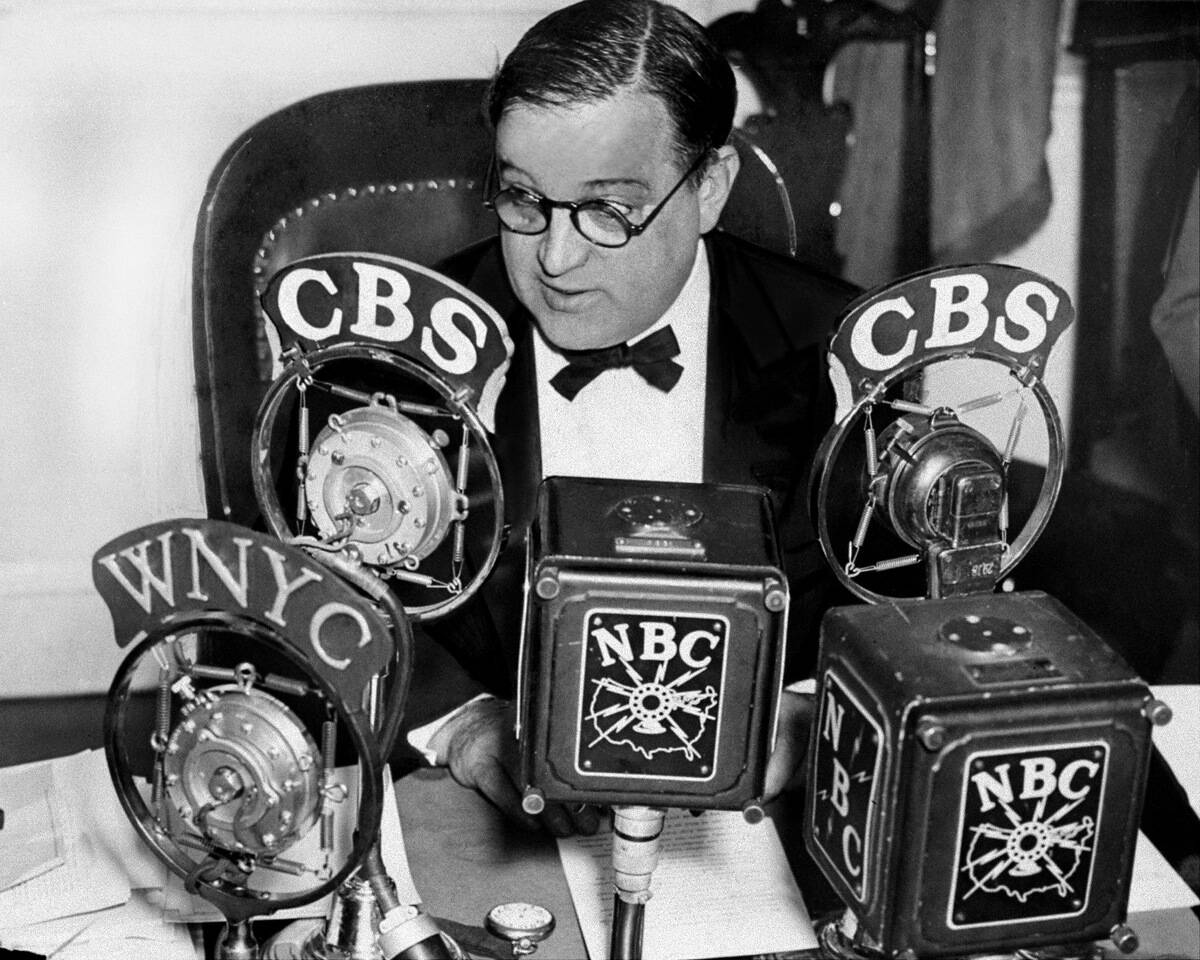
This photo of New York’s iconic mayor Fiorello LaGuardia shows him in front of a score of microphones from various networks.
With the proliferation of radios in American homes, politicians saw the value of keeping constituents informed via radio addresses. This was the basic of Franklin D. Roosevelt’s famous “fireside chats.”
People sought greener pastures.

Those who fled the Dust Bowl for California were derisively called “Okies” when they arrived, a term that eventually came to by synonymous with anyone who was seen as slow, uncultured, or worthy of disdain.
This image shows a car full of refugees from the Dust Bowl who’ve made it all the way to San Francisco. From the looks of things, all of their earthly possessions are in that car.
This was a popular photo genre.

It seems that whenever a new skyscraper was built in the 1930s, photographers were compelled to take a staged photograph of people eating a meal while balanced on a precarious beam.
These photos fell out of vogue eventually, and whether they were discouraged for safety reasons or simply became passé, the construction of massive skyscrapers in cities like New York would continue unabated.
